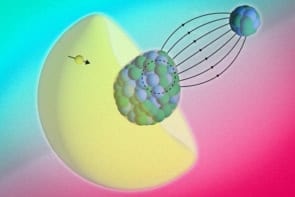Devices made from the semiconductor gallium arsenide have been grown successfully on silicon chips for the first time following a breakthrough at Motorola Labs in the US. Mismatches between the crystal structures of silicon and the so-called III-V semiconductors have thwarted attempts to make semiconductor devices on cheap silicon substrates for 30 years. The advance - stumbled upon in a separate experiment - could lead to cheaper and faster optical communications and microelectronics.

Semiconductors can only be grown on substrates with compatible crystal structures. Until now, this has meant that semiconductors such as gallium arsenide had to be grown on wafers made of the same material. But these are brittle and expensive, and limit the size of the chips to about 15 centimetres for gallium arsenide.
Scientists at Motorola have tackled this problem by developing a layer that can separate the semiconductor from the silicon substrate, yet bond with both of them. This layer – made of strontium titanate – eliminates the strain that arises when III-V semiconductors are placed directly onto the silicon. Gallium arsenide chips up to 30 centimetres across have been grown using the new technique.
The discovery could also solve the long-standing problem of incompatibility between silicon, which has poor optical properties, and light-emitting semiconductor materials. “Gallium arsenide on silicon is just the first step”, says Jim Prendergast, director of physical science at Motorola. “One of our next goals is to grow indium phosphide on silicon, which should support long-wavelength lasers critical to fibre-optic communications”.
A mishap in an attempt to make ultra-thin transistors revealed the unexpected properties of the strontium titanate layer to physicists at Motorola.


